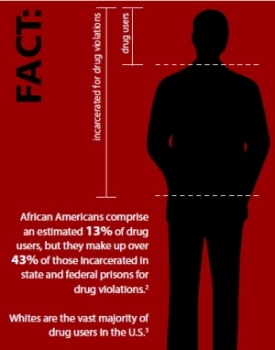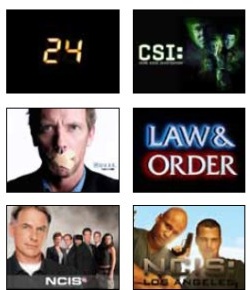Read the report | Read the press release
Watch the Primetime War on Drugs Video
The Primetime War on Drugs & Terror report was published in September 2011, ten years after 9/11 and 40 years after President Nixon’s declaration of a War on Drugs. This report is part of the Rights/Camera/Action project of the American Civil Liberties Union, which is determined to better understand the kinds of narratives about the War on Drugs and the War on Terror being presented on popular TV shows and to assess how these stories reflect or re-imagine reality.
The Lear Center commissioned online videos by digital artist/storyteller Joe Sabia, who remixed snippets from the TV episodes we studied in order to convey the flavor of our findings to a broad online audience.
Listen to Johanna Blakley discuss the report with radio host David Sirota.
We collaborated in this effort with Princeton Survey Research Associates International, who carried out a content analysis of 49 primetime shows using an instrument we designed. We selected episodes that addressed the War on Terror or the War on Drugs from ten highly-rated one hour network dramas: 24, CSI, CSI: Miami, The Good Wife, House, Law & Order, Law & Order: Los Angeles, Law & Order: SVU, NCIS and NCIS: Los Angeles. The aim was to analyze how terror or drug-related plots were portrayed rather than to assess how frequently these plots appeared. Each episode was subjected to a codebook with 145 variables and over 800 sub-variables.
 The report focuses on six key findings:
The report focuses on six key findings:
1. In TV storylines about the War on Drugs, drug users are not arrested and drug suspects are often portrayed as morally ambiguous or even heroic.
2. These TV episodes reflect that the vast majority of drug users (and likely offenders) in the U.S. are white. But the episodes don’t depict the other half of the story — that people of color are disproportionately arrested, convicted and incarcerated.
3. In these TV dramas, minorities are not depicted as perpetrators in the War on Terror. Most of the terrorists are white American citizens.
4. Primetime depicts a surprisingly sterilized version of the War on Terror in which torture, extraordinary rendition and racial and religious profiling rarely occur.
5. Military force and government violence are depicted on TV as legal but often ineffective in the War on Terror and the War on Drugs.
6. The legal system and the judicial process are rarely depicted in War on Terror and War on Drugs storylines.

In an effort to contextualize this research and how it might come into dialogue with other conversations about the War on Drugs and the War on Terror, we included recent public opinion survey data about these wars as well as data about how the government and the justice system, in particular, are conducting them. We think viewing these three types of data together — that is, depictions on television, public opinion and statistics about real world practices — is the best way to begin an informed conversation about how these wars are being carried out and understood in America.
Funding for this work was provided by the ACLU, but the report was written independently of the ACLU, reflecting only the analysis of its authors, Lear Center researchers Johanna Blakley and Sheena Nahm.

